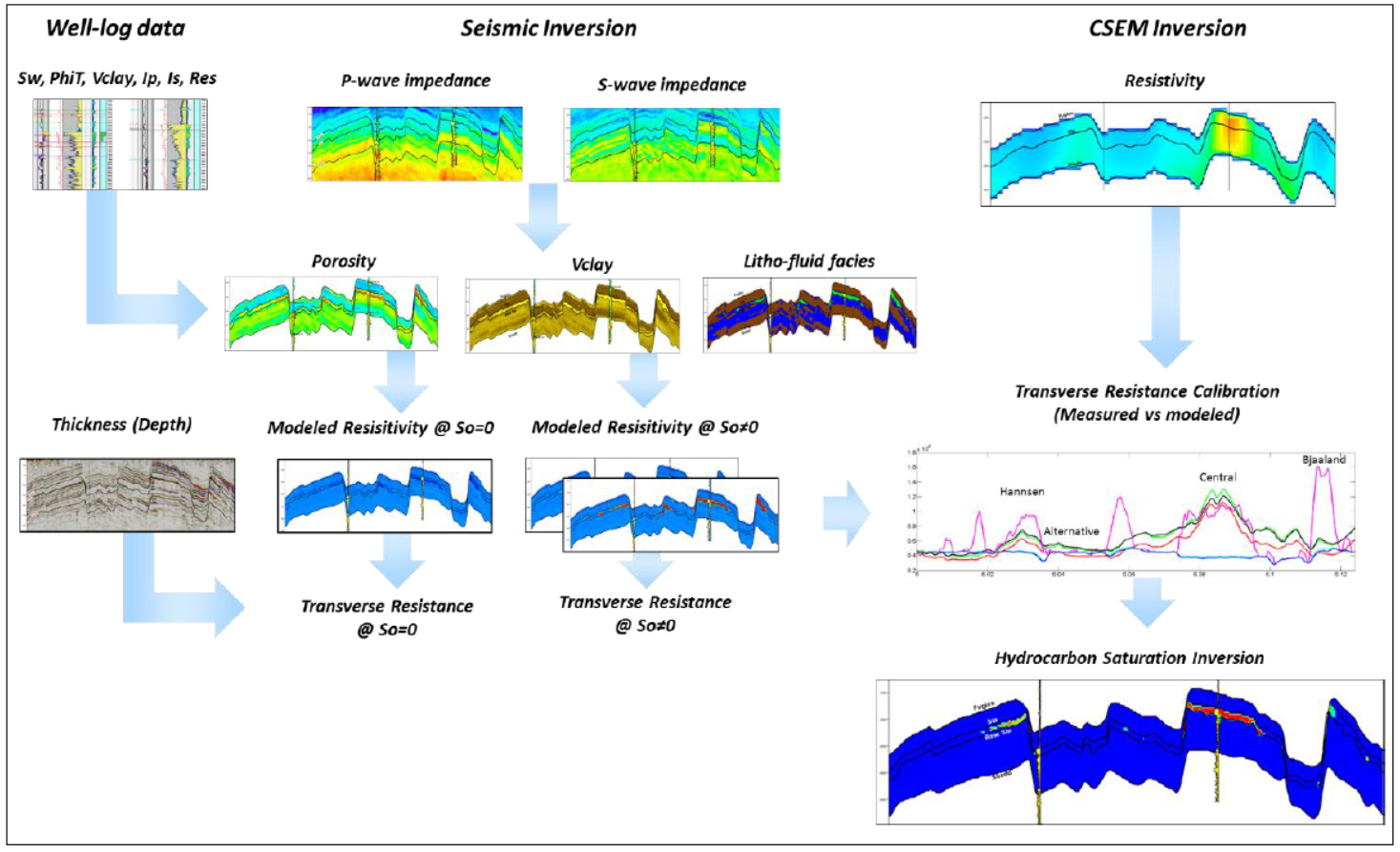Synthesis
This case study shows successful inversion of the seismic and CSEM derived properties within a rock physics framework. The well and seismic data were integrated to produce a litho-fluid facies volume identifying areas of clean oil or fizz gas sand; however, the seismic data cannot distinguish between commercial and non-commercial hydrocarbon saturation. The inclusion of the CSEM resistivity information allows for the separation of these two possible scenarios. Excellent correlation with known well results was achieved.
Multi-physics integration is not straightforward. There are a number of technical challenges that were identified for consideration in future work. For example, in the case study presented here, the reservoir interval was relatively simple, comprising a single sand interval. Mapping the resistivity into this layer was therefore relatively straightforward. However, in more complex settings with multiple reservoir layers, that cannot be independently resolved using the CSEM data, mapping from a low resolution resistivity image into multiple layers is not straightforward. A workflow for dealing with this situation must be developed. Rock physics strategies for correctly accounting for anisotropy when linking electric and elastic measurements must also be considered. However, despite this, the results demonstrate the value of combining multiple geophysical data types to improve interpretation robustness.

Fig. 342 Workflow for quantitative interpretation of well log, seismic and CSEM data and inversions.